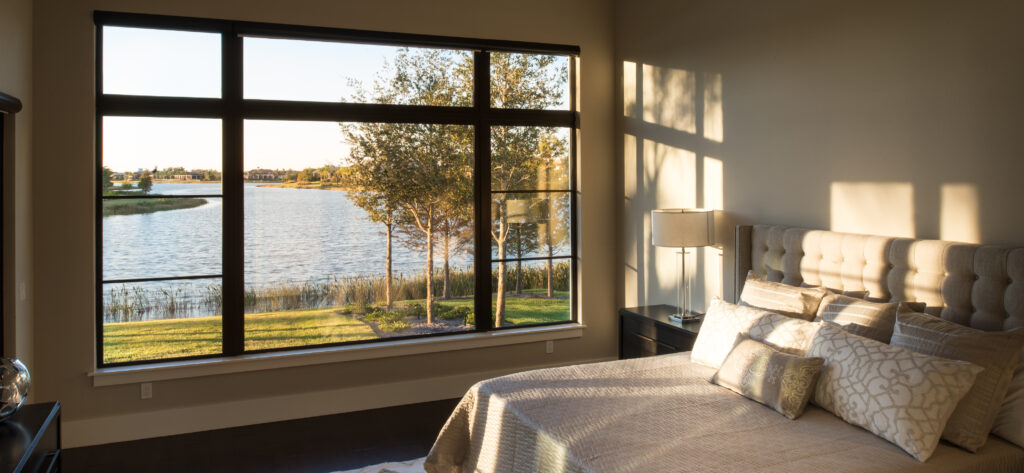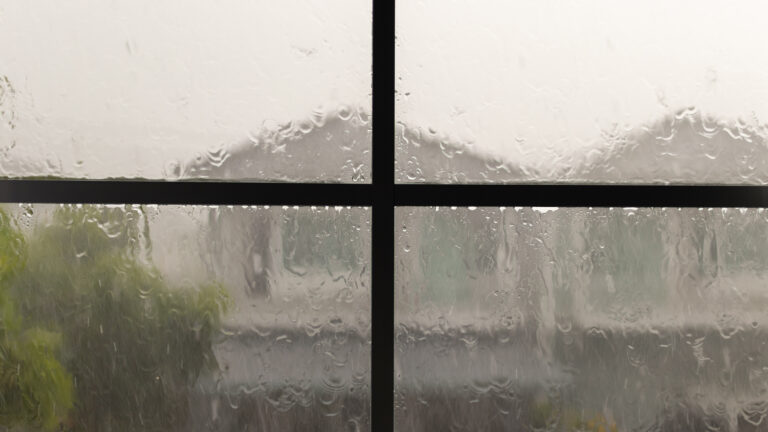Guide to Buying Energy Efficient Windows

Installing new windows is a great way to update your home and give it a personalized feel. But did you know that your new windows can actually save you money? More than a quarter of the heat gain or loss in a home is through windows. As inflation continues to affect all aspects of our current economy, utility prices worldwide are skyrocketing. One way to relieve some of that pressure is to install energy-efficient windows in your home.
How Do Standard Windows and Energy Efficient Windows Differ?
Standard windows are generally single-pane windows that are not coated in any way that will affect the heat transfer process. These windows are non-insulating and operate only to keep the elements like rain and wind outside. They also may have an aluminum or other metal frame. These metal frames, while strong, are heat conductors and do not aid the insulation process. For Floridians, when windows are not insulated, the intense sunlight will heat up an air-conditioned room increasing the indoor temperature.
Energy-efficient windows are windows that use technology to improve the heat transfer process in a home or provide insulation. They are designed to maintain a desired temperature in the home. The insulation provided by energy-efficient windows reduces the toll on your heating and cooling systems. Utility costs for the home increase when these systems have to work harder. Most energy-efficient windows have more than one pane of glass.
Advanced Features of Energy-Efficient Windows
Modern technology changed the way we look at windows. The challenge for scientists was creating an insulated window without hindering the clarity of the window itself. It isn’t unreasonable for homeowners to want clear windows that help maintain a comfortable interior temperature. One innovation is the use of argon gas as a filler in multi-paned windows. In standard double and triple-paned windows, regular air fills the space between the panes. Through experimentation, scientists determined that argon gas, a colorless and non-toxic gas, helps in the heat transfer process. Krypton is also an option as a filler. While krypton works better for heat transfer, it is also expensive and may dramatically increase the cost of your replacement windows.
Using spacers between the panes of glass increases the energy efficiency of the windows as well. The spacers ensure the distance between the panes of glass remains the same. By keeping the spacing the same, the pressure between the panes remains constant which reduces heat flow and prevents condensation.
Another way to increase the energy efficiency of your windows is by replacing metal window frames with vinyl frames. These frames are designed with UV stabilizers preventing breakdown from overexposure to sunlight. They also do not need to be painted and provide resistance to moisture increasing longevity. These frames may also be filled with insulating materials which makes them much more energy efficient than metal or wood frames.
Low-emissive coatings, or Low-E coatings, also enable windows to be more energy efficient. These are metallic coatings that are microscopic. They are nearly invisible and completely alter the heat transfer process in windows. In multi-paned windows, at least one pane of glass is treated with the Low-E coating. This coating can be applied to meet a variety of needs. Solar heat gain is the amount of solar energy transmitted into a home through a window. As different regions have different needs, the coating can be altered depending on the amount of solar gain desired by the homeowner. The coating is also able to be altered depending on the amount of visible light desired in the home. Homes that want the heat to stay inside benefit from Low-E coatings just as much as homes that rely on air conditioners to stay cool. For homes that wish to stay warm, the heat in the home hits the window and is reflected back into the home instead of being absorbed by the window and pushed out of the home.
Earning an Energy Efficiency Standard Rating: What Does It Mean?
The National Fenestration Rating Council is a not-for-profit organization that establishes window ratings in order to help consumers locate and purchase energy-efficient windows. There are different categories for energy efficiency. These ratings help homeowners determine which windows are the right ones for their area. The factors used to earn an energy efficiency standard rating are:
- U-Factor: The U-factor is an indication of how well a window insulates an area. The lower the number, the better the insulation.
- Solar Heat Gain Coefficient: The SHGC measures the amount of radiation that passes through a window. Fewer rays passing through the window reduce the passive heat inside the home. The lower the amount, the better the window is at resisting heat gain.
- Air Leakage: This computation shows how much air moves through a square foot of window area every minute. Again, the lower the number, the less air leakage there is in the window.
- Visible Transmittance: VT is the measurement of light that is allowed through a window. The higher the number, the more light there is entering the home through the window. In certain instances, more light may equal more heat in the home unless there are heat transfer options in place.
- Condensation Resistance: This measurement indicates how much condensation a window allows. Higher condensation results in a larger number. Lower condensation levels are needed for truly energy-efficient windows.
One important step in choosing replacement windows for your home is the research phase. If the goal is to invest in replacement windows in order to save on utility costs, then researching energy efficiency ratings is vital to your search. By understanding the heat transfer process and how different factors are more important in certain regions of the world, homeowners have an advantage when it comes to maximizing their dollars for energy-efficient products.
Benefits of Energy-Efficient Windows
There are many benefits to investing in energy-efficient windows including saving money, increasing property value, and living comfortably.
Save Money
Because windows are responsible for a large portion of heat gain or loss in a home, reducing the amount of heat gain or loss is the key to energy efficiency. When homeowners install energy-efficient windows, they are reducing the stress on heating and air conditioning equipment. By decreasing the stress on the equipment, the equipment does not need to overcompensate for heat loss or gain. As Floridians are keenly aware, constantly running your air conditioner to compensate for the excessive July heat brings a hefty electric bill. The same is true for homes in the northeast during the winter. Poorly insulated windows allow heat to escape from the home. This forces the heating unit to work overtime to maintain a set temperature. This in turn causes increases in utility bills. Ensuring the heat transfer process is controlled per a region’s needs will reduce the amount of a homeowner’s utility bills. Savings can increase upwards of $100 monthly with the right setup. Also, keep a watchful eye out for available rebates, incentives, and credits. They are usually offered by the government or the individual utility company. Those savings add up and will ultimately pay for your upgraded windows.
Increase Property Value
The real estate market is hot right now. What better way to increase property values than providing new aesthetically pleasing windows that will ultimately save new homeowners money at the end of the day? Energy-efficient windows are an easy sell and, with inflation as high as it is, rank at the top of the amenities list for potential homebuyers.
Live Comfortably
For the mass influx of people moving to Florida, they will want to know they will be able to survive the tropical summers and stay cool indoors. The best way to ensure you stay comfortable indoors is through energy-efficient windows. Your air conditioner can only cool down a room so much. Relying solely on the ac unit to keep you cool can be costly in the long run and cause great discomfort when the ac eventually breaks down from overuse.
Energy Efficient Window Guide
Research and Compare Window Companies and Brands
The first step in upgrading to new energy-efficient windows is to do your research. Conducting extensive research on factors contributing to energy efficiency, understanding the materials needed for energy-efficient windows, and comprehending your local climate will enable you to have a well-informed consultation with your window installer. Communication is vital to the customer/installer relationship. The more knowledge and understanding you can bring to the conversation, the better the installer will understand what it is you are looking for in your replacement windows.
Be aware of common gimmicks untrustworthy window salesmen may try to tempt you with. There are only a handful of window manufacturers out there. Any salesman who tries t upsell you on proprietary glass is just trying to separate you from more of your money. Research and compare company reviews and brand reviews to locate the right fit for your home.
Decide What Style of Windows Are Best for Your Home
There are a wide variety of window styles for consumers to choose from. Options include single-hung, double-hung, casement, picture, and awning windows. Each style of window comes with its own set of pros and cons, especially for energy efficiency. Make sure to read up on the different styles, where you believe they should be located in your home, and how that style will fit in with your energy efficiency plans.
Consider the Quality of Your Replacement Windows
Naturally, we want the highest quality products possible for our homes. It’s hard to protect your home with champagne products when you are working within a fruit punch budget. Before meeting with an installer for a consultation, have an idea of what it is you really want from your windows. If energy efficiency is more important to you than aesthetics, make sure to convey that opinion to the installer so you are able to receive the most energy-efficient bang for your buck.
Understand Energy Efficiency Window Ratings and Terms
Staying on top of the factors that contribute to energy efficiency ratings will help ensure your needs are met when meeting with your installer. Take the time to learn the jargon and understand the measurements. Yes, heat transfer is based on scientific principles, but they are easy to understand and are important when trying to ascertain how heat transfer in your region affects the heating or cooling of your home. Comprehending the terms helps you search for the right products for your needs and, again, allows you to come to the consultation with the installer armed with information.
Ask About Available Window Warranties
Many window manufacturers offer warranties for energy-efficient windows. Some are even lifetime warranties. Always inquire about warranties for your replacement windows. Should anything happen to your windows, knowing that your initial investment is covered will bring you peace of mind. It can’t hurt to ask!
Schedule a Consultation with the Experts
Mister Window offers free home consultations, occasionally referred to as a fact-finding mission or needs assessment. The time spent by Mister Window participating in the consultation allows the installer to understand the homeowner’s overall vision for the project and to express their needs for the window replacement. Mister Window’s representative will then be able to discuss the viability of those wants and needs with the customer and put together a plan to move forward, creating an aesthetically pleasing energy-efficient, money-saving package that supports the vision of the customer while not breaking the bank.
Mister Window is a leader in the window replacement industry. They have been operating in the Tampa Bay area since 1977. Contact us today to see why we are unmatched in the industry!
Pony Loka
February 3, 2023
Share Article
You May Also Be Interested In




